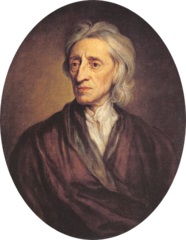The meaning of the words ‘liberal’ and ‘liberalism’ has evolved in contemporary political theory. Certain ideologies are associated the term now: pro-choice, pro-same sex marriage, social security, separation of church and state and a redistribution of wealth. These seem like relatively new political concepts, yet liberalism has had a long existence in past centuries.¹ The world has a Latin etymological root of liber, meaning ‘free,’ which means that interpretations of liberalism run parallel to interpretations of freedom.
Politically, negative and positive freedoms will either view the state as an impediment or as a facilitator. There are two moderate views of the state in the framework of freedom. One is a minimal, ‘night watchman’ type wherein the government just provides security for all citizens in their pursuit of happiness and ensuring the natural rights of individuals are untrammeled by needless laws, unfair taxation, or intrusions into any person’s private life.¹ Moderate implementations of the state-as-facilitator type include governmental regulation of education and economics, social security, laws ensuring human rights and moderate democratic socialism.¹
Classic liberalism favour the state-as-impediment framework and are concerned with encroachment of the government upon freedom of individuals.¹ Classic ‘big L Liberals’ put an emphasis on individual rights of life, property and pursuit. Contemporary liberalism idealizes a proactive state that ensures the welfare of all, including some form of a safety net social security system.
This exemplifies a true change in meaning of not only liberalism, but ideologies associated with it. Reproductive rights went from the right to have children to the right to have an abortion. Gay meant happy, joyful and cheerful. Marriage meant the lifelong union of man and woman, ultimately leading to a family.¹ The right to life has been replaced by the right to die, the right to reproduce replaced by the rights to an abortion and the right to social engagement replaced by socialistic restructuring.¹
Reference:
1.Kainz, Howard. Classical Versus Contemporary Liberalism. Retrieved from http://www.crisismagazine.com/2011/classical-versus-contemporary-liberalism
© BrainMass Inc. brainmass.com April 27, 2024, 10:03 pm ad1c9bdddf